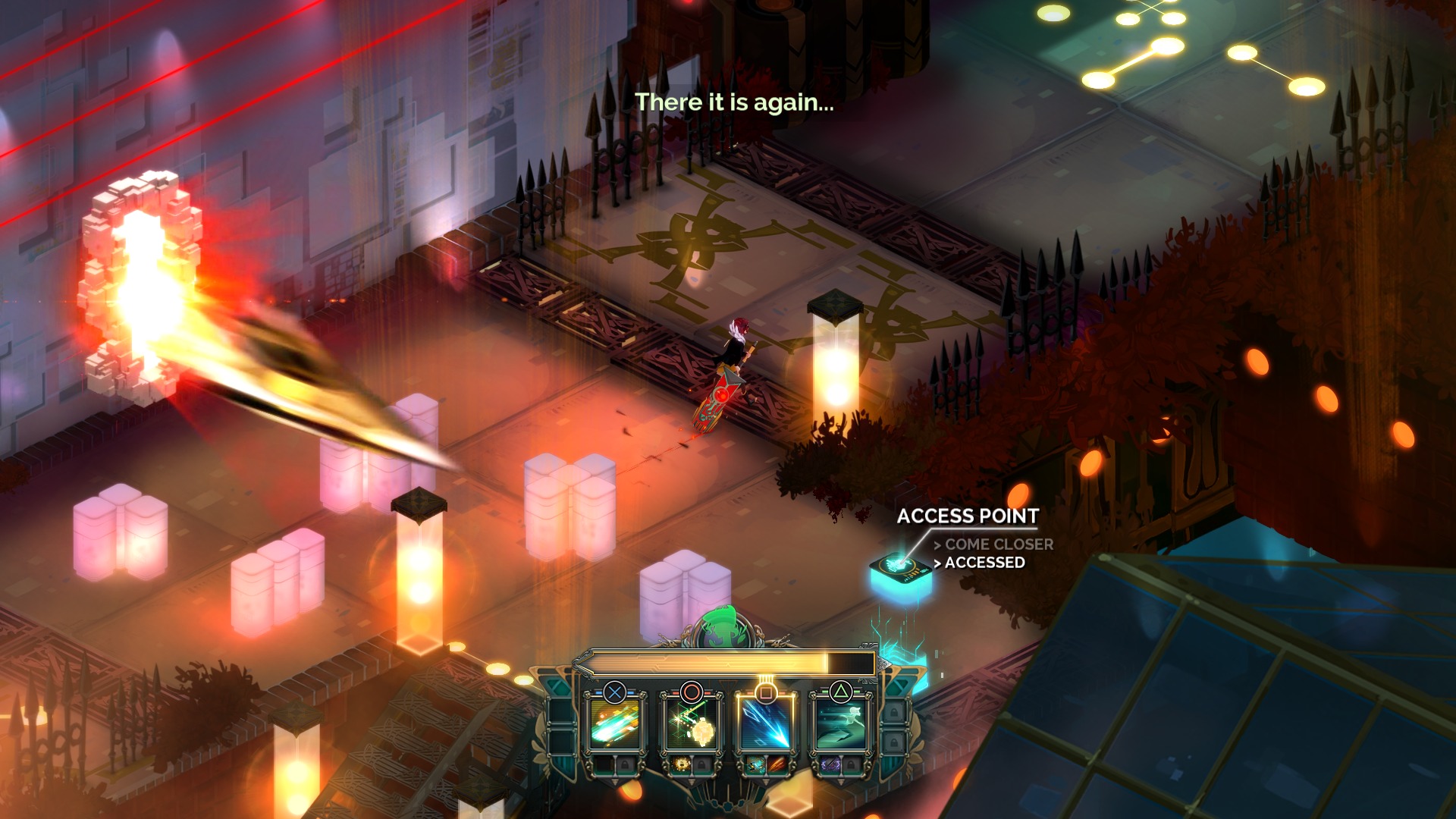In the world of Transistor, players are presented with a highly versatile and engaging combat system that allows for deep customization and experimentation through the use of “Functions.” This system enhances gameplay by enabling players to tailor their character’s abilities to suit their preferred style of play. Here’s a detailed breakdown of the mechanics involved in combining Functions and how this contributes to the overall gameplay experience.
Understanding Functions
1. Active Functions:
– These are the primary abilities that players utilize during combat. Each active function (like Spark(), Jaunt(), and Crash()) serves a unique purpose, offering various offensive and tactical maneuvers to outsmart enemies.
2. Enhancing Functions:
– Each active function can be augmented by two enhancing functions, which modify or add extra effects to the primary ability.
– For example, if you equip Spark() with Load(), it transforms from a single-target attack into a multi-target strike, expanding its utility and allowing for greater damage output.
– Another interesting combination could involve enhancing Jaunt() with Crash(), resulting in a teleportation ability that not only shifts location but also deals damage and stuns enemies upon arrival.
3. Passive Functions:
– Passive functions provide ongoing benefits without requiring activation. These can include effects such as increased damage resistance or immunity to slow effects.
– Strategically selecting passive functions can greatly enhance survivability and overall effectiveness in various combat scenarios.
Strategic Layering and Combinations
The combination system in Transistor is designed to encourage experimentation, allowing players to formulate powerful abilities through creative synergies.
– Combos: By layering enhances onto active functions, players can create impactful combos.
– As an illustration, leveraging Jaunt() with the enhancements of Load() and Crash() results in a teleportation that not only inflicts damage but also stuns foes, making it a highly effective offensive tactic.
– Real-Time vs. Turn Mode:
– Players have the option to execute their combinations in real-time during combat or to pause the action using Turn() mode. This mechanic is crucial as it allows for strategic planning and chaining of abilities to maximize damage and effectiveness against adversaries.
Experimentation and Optimization
To really harness the potential of the Functions system in Transistor, players should:
– Experiment: Start mixing different enhancing functions with active functions to discover effective synergies that can cater to different combat situations.
– Complement with Passive Functions: Choose passive functions that reinforce your defense or add utility, ensuring a well-rounded build.
– Utilize Access Points: Regularly visit Access Points, which serve as safe areas to experiment with new combinations, reload if changes are unproductive, and encourage evaluation without the pressure of immediate combat.
– Engage with Lore: The more you use various functions, the more lore is revealed, adding narrative depth and incentivizing players to explore and engage with diverse functions.
Conclusion
The combining Functions system in Transistor is incredibly robust, offering layers of strategy that cater to a wide array of play styles. By skillfully mixing and matching active, enhancing, and passive functions, players can create uniquely powerful abilities that not only redefine personal gameplay but also enhance the narrative immersion of the game. Whether you are building for raw damage, tactical control, or sustainability during battles, the system provides the flexibility necessary to tailor the experience to your strategic preferences.






Leave a Reply